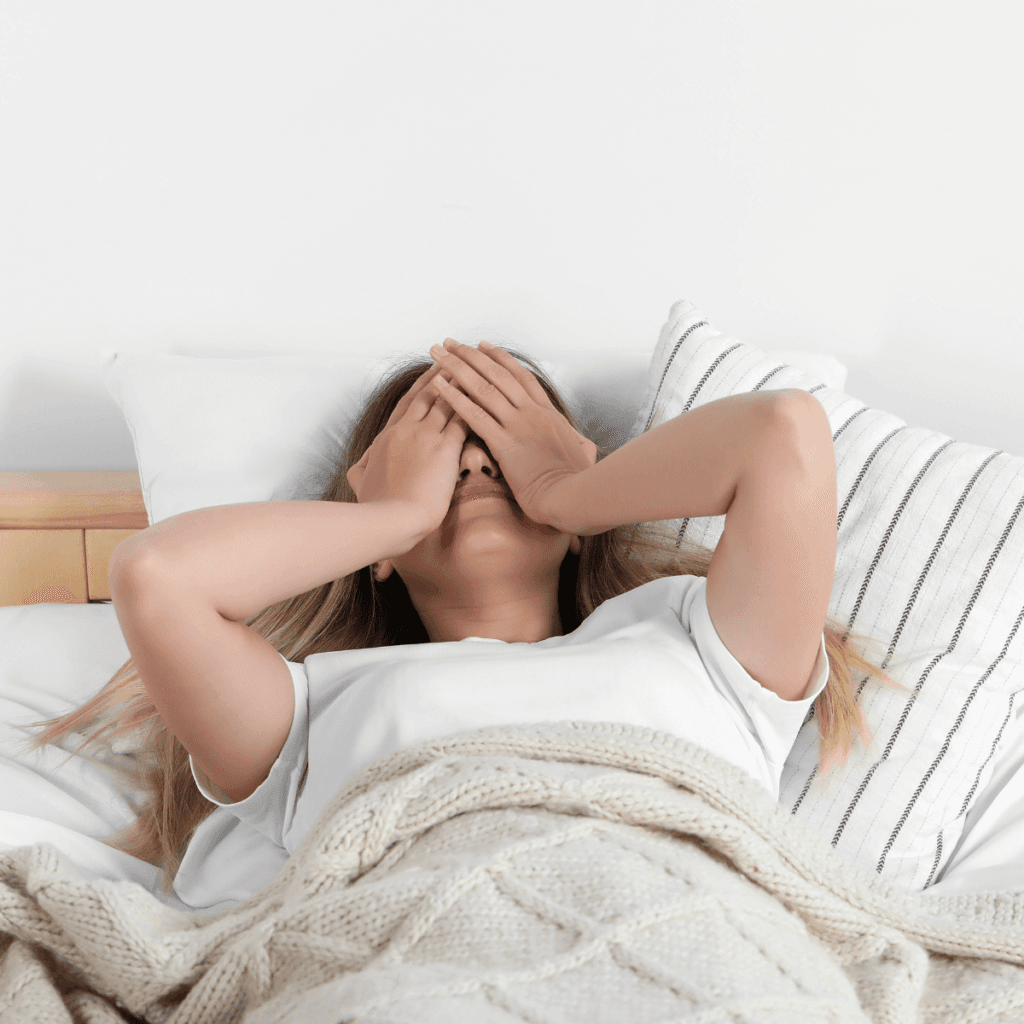In an increasingly digital world, our exposure to blue light has skyrocketed. Emitting from the sun, but also from our screens, LED lights, and energy-efficient bulbs, blue light plays a significant role in regulating our circadian rhythm and boosting alertness during the day. However, prolonged exposure, especially from screens, has raised concerns about its impact on our health, particularly our skin.
Contents
Effects of blue light on our health and skin appearance
Blue light, with its short wavelength and high energy, penetrates the skin more deeply than UV rays. While some studies suggest it can stimulate the production of free radicals, potentially accelerating skin aging and contributing to hyperpigmentation, the evidence remains somewhat inconclusive. Nevertheless, dermatologists recommend protection against blue light, especially for those with sensitive or acne-prone skin.
Beyond skin concerns, excessive exposure to blue light has been linked to disruptions in sleep patterns, leading to poorer sleep quality and potentially contributing to eye strain and fatigue. Some research even suggests a connection between blue light exposure and increased risk of chronic diseases like diabetes and cardiovascular issues, although more studies are needed to fully understand these links.
In our tech-driven society, it’s nearly impossible to avoid blue light entirely. However, simple steps like using blue light filters on screens, wearing broad-spectrum sunscreen daily, and incorporating antioxidants into skincare routines can help mitigate its potential effects on both skin health and overall well-being.

Minimizing the negative effects of blue light exposure
Combating the effects of modern-day stressors on your skin and overall health might sound like an overwhelming task, but it can actually be boiled down to a few key steps that you can easily incorporate into your day-to-day. Here are some ideas on how to effectively reduce the negative effects of blue light exposure.
- Adjust Device Settings: Consider activating “night mode” or using blue light filter apps on your devices. These settings adjust the color temperature of your screen to emit warmer, less intense light, reducing eye strain and minimizing potential skin damage caused by blue light exposure. By making this simple adjustment, you can protect your eyes and skin without sacrificing your screen time.
- Establish Healthy Screen Habits: Create a healthy screen time routine by setting boundaries and limits on your device usage, especially before bedtime. Aim to reduce exposure to screens at least an hour before sleep to improve sleep quality and overall well-being. Instead, engage in relaxing activities such as reading a book, meditating, or practicing gentle stretches to unwind and prepare your body for restorative sleep.
- Optimize Your Environment: Take proactive steps to optimize your environment for reduced blue light exposure. Replace standard LED lights with warmer alternatives, such as incandescent or halogen bulbs, to create a more soothing ambiance. Additionally, consider installing dimmer switches to control the intensity of light in your space, further minimizing the impact of blue light on your eyes and skin.
- Prioritize Skincare: Integrate skincare products that offer protection against blue light into your daily routine. Look for products containing antioxidants like vitamin C and E, which help neutralize free radicals generated by blue light exposure, and broad-spectrum SPF to shield your skin from harmful UV rays and blue light damage. By prioritizing skincare, you can combat premature aging and maintain healthy, radiant skin in today’s digital age.
Protecting your skin for blue light exposure using SPF
Sounds too good to be true, but it is more than possible. The key to achieving this level of skin protection is investing in high-quality products that are specifically formulated to minimize the negative effects of environmental factors on your skin.
One such product is the revolutionary Hyalogy P-effect UV Protector SPF 25 PA++ by the esteemed Japanese nano-cosmetic brand Forlle’d, a game-changer in sun protection and skincare. Crafted with meticulous attention to detail, this lightweight sunscreen emulsion offers unparalleled defense against harmful UVA and UVB solar rays, as well as blue light and environmental aggressors.
Infused with a potent blend of low molecular weight hyaluronic acid, squalane, pearl protein, zinc oxide, titanium dioxide, moringa extract, and ceramides-3, this advanced formula goes beyond mere sun protection. Its highly effective moisturizing and regenerating components work synergistically to normalize restorative processes within the skin, combating oxidative stress and promoting overall skin health.

The benefits of introducing antioxidants to your skincare
Harnessing the power of local antioxidants is a game-changer in the battle against free radicals induced by blue light exposure. Extensive research demonstrates the efficacy of antioxidants in combating oxidative stress, making them a promising alternative to traditional photoprotective products. Amongst this ingredient group, Vitamin C stands out as a top contender due to its ability to penetrate skin cells directly, neutralizing any oxidative damage present.
When selecting a Vitamin C-infused cream, it’s crucial to scrutinize the concentration and combination of ingredients. Pairing Vitamin C with Vitamin E amplifies their antioxidative prowess, creating a potent defense against free radicals. For optimal protection against blue light exposure, look no further than the innovative Hyalogy P-effect VCIP cream by Forlle’d.
This cutting-edge formula not only prevents pigmentation and revitalizes the skin but also combats aging mechanisms with its antioxidant-rich composition. By stimulating skin cell production and collagen formation, it fosters a youthful complexion while simultaneously mitigating the harmful effects of UV radiation and neutralizing reactive oxygen species. Plus, its patented low molecular complex works wonders in restoring skin at the cellular level, ensuring a radiant and rejuvenated appearance.
The power of alpha-lipoic acid against oxidative damage
Unlike traditional antioxidants, alpha-lipoic acid operates uniquely by activating the skin cell’s natural defense mechanisms, effectively mimicking oxidative stress. For those spending extended periods in front of blue screens, incorporating moisturizing products enriched with both vitamin C and alpha-lipoic acid can provide optimal protection and rejuvenation.
Not only beneficial in skincare formulations, alpha-lipoic acid also shines as a dietary supplement, offering a comprehensive approach to combat oxidative stress from within. Whether applied topically or ingested, this versatile ingredient promises to enhance your skin’s resilience and radiance, making it a must-have addition to your beauty arsenal.
Incorporating simple yet effective strategies into your skincare routine can significantly reduce the negative impact of blue light exposure on your skin. From using blue light filters and antioxidant-rich products to adopting healthy screen habits, protecting your skin from modern-day stressors is within reach. Following the expert tips provided in this article, you can confidently navigate the digital world while maintaining a luminous and healthy complexion for years to come.


